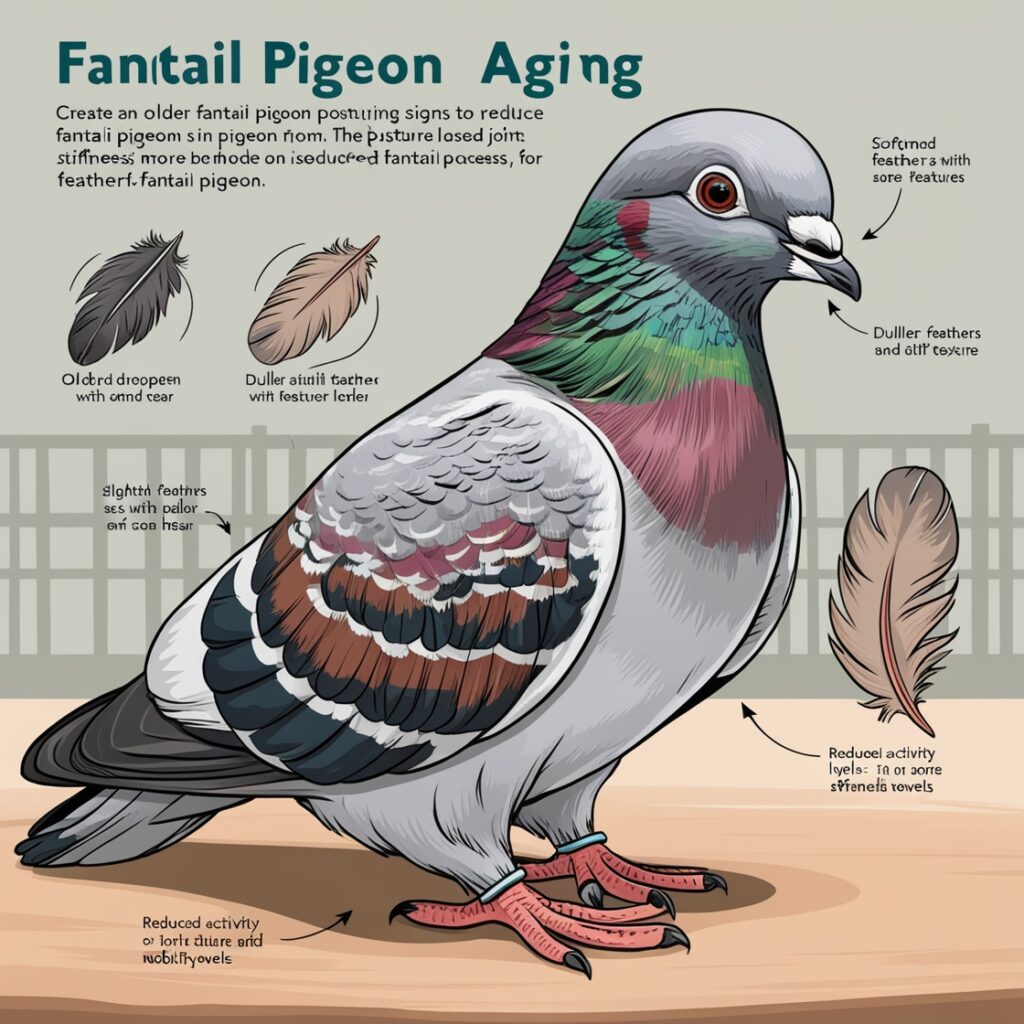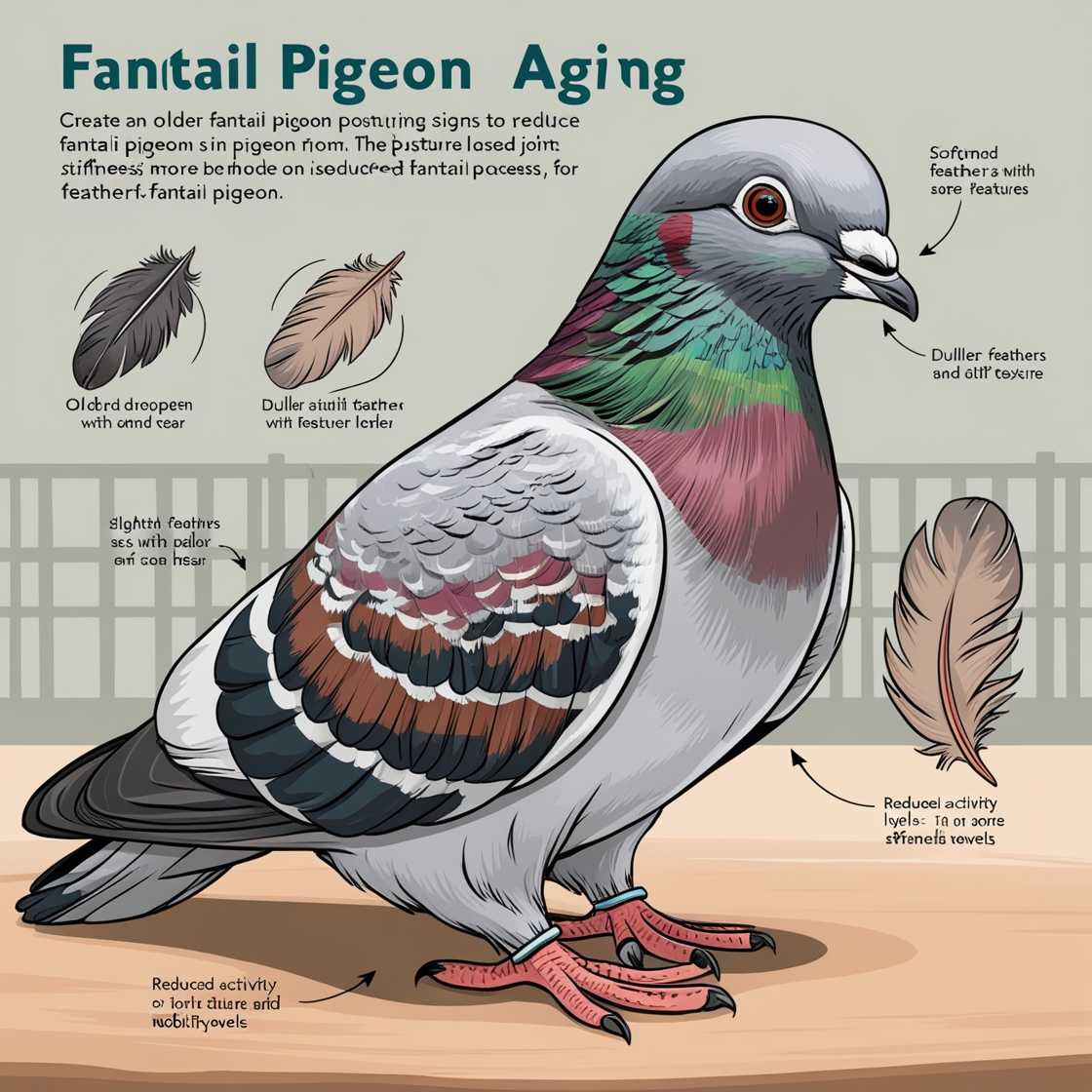Life Cycle of Fantail pigeons
The Complete Life Cycle of Fantail Pigeons From Birth to Death
Fantail pigeons are one of the most well-known and admired breeds in the pigeon world, celebrated for their striking fan-shaped tails and graceful posture. With their captivating appearance, these pigeons also have a deep historical background and distinct behavioral traits that make them truly fascinating. This article provides an in-depth look at the complete life cycle of Fantail pigeons, from birth to adulthood and eventually through to their natural passing, highlighting their breeding practices, growth stages, care requirements, and more.

1. The Origin of Fantail Pigeons
Fantail pigeons are believed to have originated in India, with centuries of refinement achieved through selective breeding. These birds belong to the broader category of fancy pigeons, bred primarily for ornamental purposes rather than practical uses like racing or homing. Their most distinctive feature is their large, fan-shaped tail, which comprises 30 to 40 feathers—much higher than the standard 12 to 14 in most pigeon breeds. The tail is carried upright, creating a fan-like display that defines the breed’s elegance and beauty.
2. Breeding and Birth
Breeding Fantail pigeons begins by selecting compatible pairs, focusing on desirable traits like a well-formed tail, proper posture, and strong health. Once matched, courtship rituals such as cooing, bowing, and mutual preening take place. The female usually lays one or two eggs within 8 to 10 days post-mating, in a nest built from twigs, feathers, and soft materials.
The incubation period lasts around 17 to 19 days, with both the male and female taking turns warming the eggs. During this phase, a stress-free environment and a nutrient-rich diet, particularly in calcium, are crucial for supporting egg development and the overall health of the breeding pair.
3. Hatchlings and Early Development
Upon hatching, the newborn squabs are blind, featherless, and entirely reliant on their parents for food and warmth. The parents produce “pigeon milk,” a nutrient-dense secretion that provides essential proteins, fats, and antibodies, helping the squabs grow and develop immunity.
In the first few weeks, the squabs rapidly gain strength and feathers. By 10 days old, they open their eyes, and within two weeks, their feathers begin to emerge. Initially, pigeon milk remains their main diet, with solid food gradually introduced as they grow.
4. Juvenile Stage and Independence
At around three to four weeks old, Fantail pigeons enter the juvenile stage. By this time, they are fully feathered and start exploring their environment but still rely on their parents for feeding. This is a key period for learning essential behaviors, such as foraging, preening, and social interaction, by mimicking their parents.
Around six to eight weeks old, the young pigeons are weaned and begin eating independently. At this stage, they are often separated from their parents and housed with other juveniles in aviaries, promoting flock integration and socialization.
5. Adult Fantail Pigeons
Fantail pigeons reach sexual maturity between six to eight months of age, with some taking up to a year to fully develop. Adults display all the typical traits of the breed, including their signature tail display, cooing, and courtship behaviors. They are known for their gentle and calm nature, making them popular with pigeon enthusiasts.
Caring for adult Fantail pigeons requires providing a balanced diet, including grains, seeds, and fresh vegetables, along with access to clean water. Routine health check-ups, a clean living space, and vigilance against common ailments like respiratory infections and parasites are essential for maintaining their health and well-being.
Hatchlings and Early Development of Fantail Pigeons: A Detailed Guide

Moment of Hatching
The hatching process is a pivotal and delicate time for Fantail pigeons. After approximately 17 to 19 days of incubation, the squab uses a small, sharp projection on its beak called the “egg tooth” to break through the eggshell. This tiny but essential tool helps the squab pierce the shell from the inside, and the process can take several hours. Hatching is physically taxing, and the squab often rests between efforts to crack the shell further.
Once it emerges, the squab is wet, weak, and vulnerable, covered in only a thin layer of downy feathers. It is entirely dependent on its parents for warmth, protection, and nourishment. During this period, the parent pigeons, particularly the mother, are highly attentive, ensuring that the hatchling is kept warm and comfortable within the nest.
The Role of Pigeon Milk in Early Nutrition
In its first days of life, a Fantail pigeon hatchling relies solely on “pigeon milk” for nutrition. Unlike traditional milk, pigeon milk is a nutrient-rich secretion produced in the crop of both parent pigeons. Packed with essential proteins, fats, and antibodies, it supports the squab’s rapid growth, immune development, and overall health.
The parents regurgitate this secretion directly into the squab’s mouth, providing nourishment at regular intervals. For the first week, pigeon milk is the exclusive food for the hatchling, fueling its rapid growth during this critical period.
Rapid Growth and Feather Development
Fantail squabs experience rapid growth in the first few weeks of life. Just days after hatching, their eyes begin to open, and they start to perceive the world around them. As they continue feeding on pigeon milk, their strength increases, and feathers begin to develop. By the end of the first week, downy feathers are gradually replaced with more developed feathers that offer better insulation.
Feather growth marks an important milestone. It not only regulates the squab’s body temperature but also prepares it for future activities like preening and flight. By two weeks of age, the squab begins to resemble a smaller version of an adult Fantail pigeon, with more pronounced feather development.
Transition to Solid Food
Between one to two weeks of age, the squab’s diet starts to transition from pigeon milk to solid food. The parents slowly introduce grains, seeds, and other soft foods, but pigeon milk remains a primary food source during this transition. As the squab’s beak hardens, it becomes better equipped to process solid food.

This gradual dietary shift helps prepare the squab for the adult pigeon diet it will eventually adopt. The parents closely monitor the squab’s adaptation to the new foods, adjusting the mixture of pigeon milk and solids as needed to ensure healthy growth.
Learning to Be a Pigeon: Socialization and Behavior
As the squab matures, it begins to explore its environment and learn essential behaviors for survival. Socialization with its parents and siblings is crucial during this stage, as the young pigeon learns by watching and mimicking adult behaviors, including preening, foraging, and interacting with other pigeons.
Preening is one of the first skills the squab develops, as it is important for maintaining feather health. The squab also begins to practice using its beak, preparing for future foraging. Early socialization experiences help develop the squab’s coordination and the skills needed for independent living.
During this period, the squab also begins vocalizing, producing soft coos similar to adult pigeons. These vocalizations serve as communication with the parents, strengthening the bond and sense of security within the family unit.

